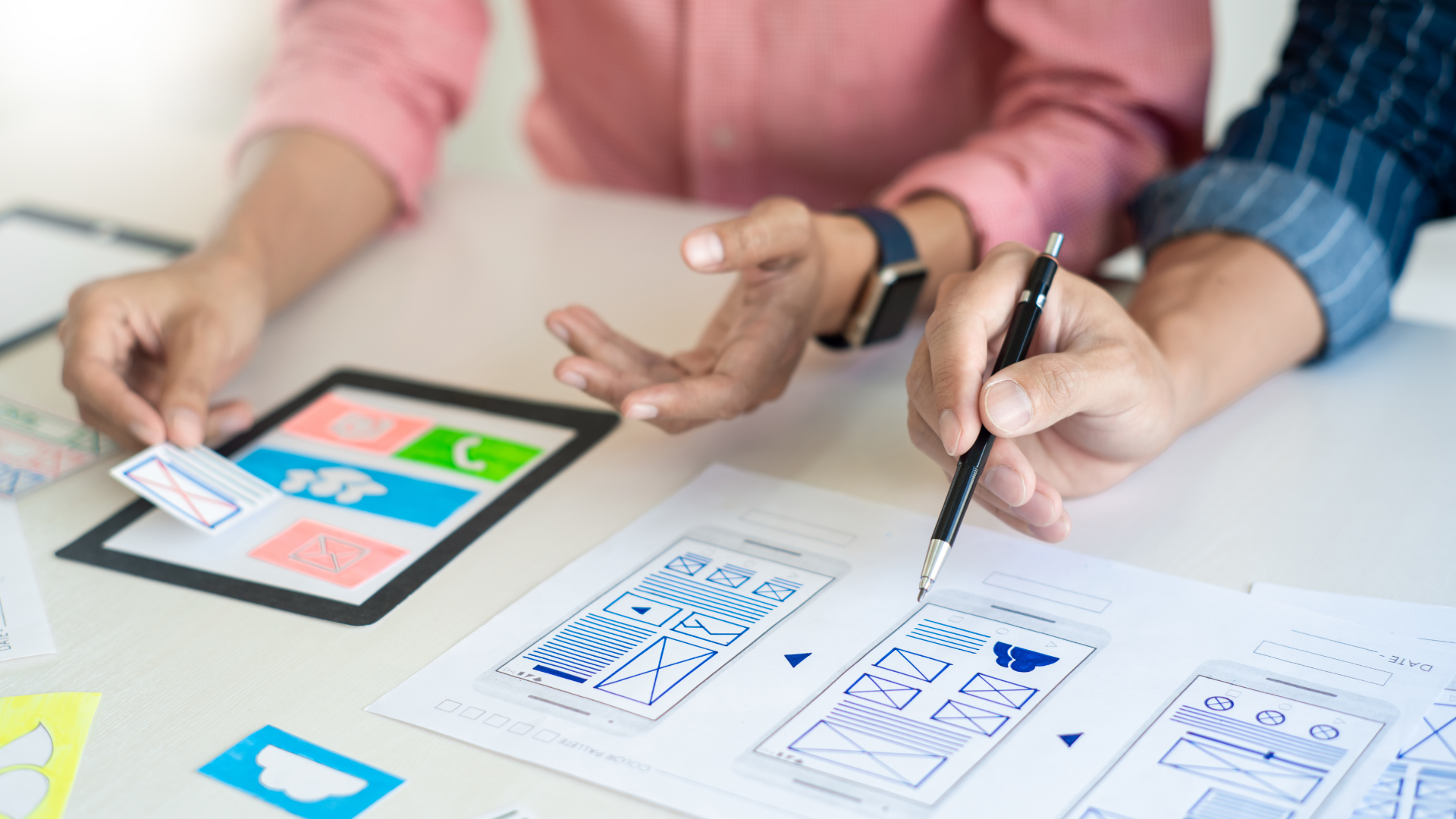UX LENS
News and Tips

Tailored Personalized Experience
In today’s digital landscape, users crave experiences that feel made just for them. This is where personalised UI/UX design comes in. By tailoring interfaces and user journeys to individual needs and preferences, businesses can create a more engaging and satisfying experience, ultimately boosting user loyalty and conversions.
Let us understand more about this..
What is Personalised UI/UX Design?
Tailored Personalized Experience of websites/apps is necessary for smooth transition for users. Interactive experience helps the user become engaged in the content. So, in hindsight personalisation of user needs, preferences and behaviour combined with product experiences, UI, content helps in making design interactive.
There are 2 types of personalisation:
- Implicit Personalisation:
Tailoring personal recommendations on user actions such as search history or purchase history.
- Contextual Personalisation:
Leveraging real time data to tailor content or product recommendations.
By leveraging this data, designers can create interfaces that are:
More relevant: Users see content and features that align with their interests and goals.
Easier to navigate: Layouts and functionalities are adapted to user preferences for a smoother experience.
More engaging: Personalised touches keep users interested and coming back for more.
Let us understand more about this with examples:
What are the examples of tailored personalised experiences?
Below are some examples of Tailored Personalized Experience:
Fitness App:
Imagine you’re designing a fitness app. A user suggests customising the home screen to display favourite workouts. You can create a “Customise” button that allows users to choose which workouts appear on their home screen.
– Role-play conversation:
– User: “I wish I could customise the home screen.”
– Designer: “Certainly! Tap the ‘Customise’ button to choose your preferred workouts.”
Clothing Website:
A clothing website uses user data to Tailored Personalized Experience. It recommends products based on browsing and purchase history.
Streaming services: Curated playlists and movie suggestions Tailored Personalized Experience to user tastes such as Spotify, YouTube.
Learning platforms: Personalised learning paths based on a user’s skill level and progress.
What is the strategy for creating personalised UI/UX?
Here are some key considerations for incorporating personalization into your UI/UX strategy:
Identify your user personas: Understand your target audience and their unique needs.
Gather user data responsibly: Be transparent about data collection and ensure user privacy.
Choose the right personalization techniques: A/B testing can help determine what resonates with users.
Measure and iterate: Continuously monitor user behaviour and adapt your personalization strategy accordingly.
What is the future of personalised UI/UXdesign?
The future of UI/UX design is undoubtedly personalised. As technology advances, we can expect even more sophisticated personalization techniques:
AI-powered personalization: Machine learning algorithms will predict user needs with greater accuracy.
Biometric integrations: Facial recognition and voice analysis could further personalise experiences.
Conclusion
By embracing personalised UI/UX design, businesses can create a competitive edge and build stronger relationships with their users. Remember, the key is to personalise ethically and with a focus on user privacy. When done right, personalization can transform your user experience from good to great.
Placement of the week

Purva Tatiya-BTech CS
Symphony Tech-UXUI Designer
Stay updated with new designs and build a strong portfolio. I learned a lot about the design process. Understanding the design thinking process was beneficial. It helped me create a portfolio and find suitable opportunities.
Accessibility Audit Tools
Responsive Design Practices
Tailored Personalized Experience
In today’s digital landscape, users crave experiences that feel made just for them. This is where personalised UI/UX design comes in. By tailoring interfaces and user journeys to individual needs and preferences, businesses can create a more engaging and satisfying experience, ultimately boosting user loyalty and conversions.
Let us understand more about this..
What is Personalised UI/UX Design?
Tailored Personalized Experience of websites/apps is necessary for smooth transition for users. Interactive experience helps the user become engaged in the content. So, in hindsight personalisation of user needs, preferences and behaviour combined with product experiences, UI, content helps in making design interactive.
There are 2 types of personalisation:
- Implicit Personalisation:
Tailoring personal recommendations on user actions such as search history or purchase history.
- Contextual Personalisation:
Leveraging real time data to tailor content or product recommendations.
By leveraging this data, designers can create interfaces that are:
More relevant: Users see content and features that align with their interests and goals.
Easier to navigate: Layouts and functionalities are adapted to user preferences for a smoother experience.
More engaging: Personalised touches keep users interested and coming back for more.
Let us understand more about this with examples:
What are the examples of tailored personalised experiences?
Below are some examples of Tailored Personalized Experience:
Fitness App:
Imagine you’re designing a fitness app. A user suggests customising the home screen to display favourite workouts. You can create a “Customise” button that allows users to choose which workouts appear on their home screen.
– Role-play conversation:
– User: “I wish I could customise the home screen.”
– Designer: “Certainly! Tap the ‘Customise’ button to choose your preferred workouts.”
Clothing Website:
A clothing website uses user data to Tailored Personalized Experience. It recommends products based on browsing and purchase history.
Streaming services: Curated playlists and movie suggestions Tailored Personalized Experience to user tastes such as Spotify, YouTube.
Learning platforms: Personalised learning paths based on a user’s skill level and progress.
What is the strategy for creating personalised UI/UX?
Here are some key considerations for incorporating personalization into your UI/UX strategy:
Identify your user personas: Understand your target audience and their unique needs.
Gather user data responsibly: Be transparent about data collection and ensure user privacy.
Choose the right personalization techniques: A/B testing can help determine what resonates with users.
Measure and iterate: Continuously monitor user behaviour and adapt your personalization strategy accordingly.
What is the future of personalised UI/UXdesign?
The future of UI/UX design is undoubtedly personalised. As technology advances, we can expect even more sophisticated personalization techniques:
AI-powered personalization: Machine learning algorithms will predict user needs with greater accuracy.
Biometric integrations: Facial recognition and voice analysis could further personalise experiences.
Conclusion
By embracing personalised UI/UX design, businesses can create a competitive edge and build stronger relationships with their users. Remember, the key is to personalise ethically and with a focus on user privacy. When done right, personalization can transform your user experience from good to great.
Accessibility Audit Tools
Responsive Design Practices
Placement of the week

Purva Tatiya-BTech CS
Symphony Tech-UXUI Designer
Stay updated with new designs and build a strong portfolio. I learned a lot about the design process. Understanding the design thinking process was beneficial. It helped me create a portfolio and find suitable opportunities.
